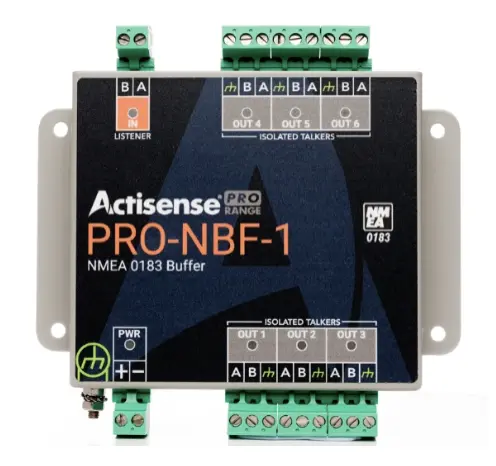
by Barani Chettiar | Dec 28, 2024 | Uncategorized
In the intricate web of marine electronics, NMEA networks stand as the backbone of communication, facilitating the exchange of critical data among onboard devices. Within this network, data buffering plays a vital role in ensuring the integrity and reliability of information transmission. Let’s delve into the significance of data buffering within NMEA networks and how it enhances efficiency and reliability.
Importance of Data Integrity: Prevents Data Loss
Data integrity is paramount in maritime operations, where accurate information can mean the difference between safe passage and disaster. By buffering incoming data packets, NMEA networks safeguard against data loss or corruption, ensuring that every piece of information reaches its destination intact.
Smooth Data Transmission: Ensures Continuous Flow
Smooth data transmission is essential for maintaining situational awareness and making informed decisions onboard. Buffers regulate the flow of data, preventing bottlenecks and ensuring a continuous stream of information between devices, even during peak usage periods.
Error Handling: Minimizes Communication Errors
Communication errors can disrupt navigation and compromise safety. NMEA buffers include error-handling mechanisms that detect and correct transmission errors, minimizing the risk of miscommunication and ensuring reliable data exchange between devices.
Increased Network Reliability: Reduces Network Congestion
Network congestion can hamper data transmission and impede critical operations. By temporarily storing and managing data packets, buffers alleviate network congestion, enhancing the reliability and efficiency of NMEA networks, especially in environments with multiple interconnected devices.
Scalability and Flexibility: Easy Integration with Various Devices
NMEA buffers offer scalability and flexibility, accommodating a wide range of devices and protocols. Whether it’s GPS receivers, chartplotters, depth sounders, or AIS transponders, buffers seamlessly integrate with diverse onboard instruments, fostering interoperability and adaptability.
Cost Efficiency: Saves on Hardware Expenses
In addition to their functional benefits, NMEA buffers offer cost efficiencies by reducing the need for redundant hardware. By consolidating data management functions within a single device, buffers streamline system architecture, minimizing equipment costs and optimizing resource allocation.
Conclusion: Buffers Enhance Efficiency and Reliability
In conclusion, NMEA buffers are indispensable components of marine electronics systems, enhancing efficiency and reliability in data transmission. By ensuring data integrity, facilitating smooth communication, handling errors, reducing network congestion, offering scalability and flexibility, and promoting cost efficiency, buffers play a crucial role in optimizing the performance of NMEA networks. As vessels navigate the vast expanse of the ocean, the reliability and efficiency afforded by NMEA buffers empower sailors to navigate with confidence, leveraging the full potential of their onboard systems to conquer the challenges of the maritime domain.

by Barani Chettiar | Sep 30, 2024 | Uncategorized
Introduction: Importance of Marine Radio Communication
In the vast expanse of the open sea, reliable communication is the linchpin of maritime safety for commercial vessels. The effectiveness of marine radio communication can be compromised by various factors, with weather conditions posing a significant challenge. This article explores the impact of weather on marine radio equipment, the benefits of weatherproofing in enhancing durability and reliability, safety considerations during emergencies, the cost-effectiveness of weatherproofing, and maintenance tips to ensure the longevity of vital communication tools.
Weather Challenges: Impact on Equipment Functionality
Marine environments are unforgiving, with vessels often facing adverse weather conditions such as rain, saltwater exposure, high winds, and extreme temperatures. These environmental challenges can take a toll on the functionality of marine radio equipment. Moisture infiltration, corrosion, and exposure to saltwater can lead to short circuits, degraded performance, and, in extreme cases, complete equipment failure. Understanding the impact of weather on radio communication systems underscores the importance of proactive measures to mitigate these risks.
Benefits of Weatherproofing: Durability and Reliability
Weatherproofing marine radio equipment is a strategic solution to combat the detrimental effects of harsh environmental conditions. Weatherproofing involves the application of protective coatings, seals, and enclosures to create a barrier against moisture, salt, and other external elements. The benefits of weatherproofing extend beyond durability to ensure the long-term reliability of critical communication tools. Weatherproofed equipment stands resilient against the corrosive effects of saltwater, maintaining optimal functionality even in challenging maritime conditions.
Safety Considerations: Critical in Emergency Situations
During emergencies at sea, the reliability of marine radio communication can be a matter of life and death. Weatherproofed equipment provides a crucial layer of protection, ensuring that communication systems remain operational when needed most. In situations where vessels are exposed to heavy rain, storms, or rough seas, weatherproofing prevents water damage and helps maintain clear and consistent communication, facilitating timely coordination of rescue efforts and ensuring the safety of crew members.
Cost-Effectiveness: Long-Term Savings on Repairs
While the initial investment in weatherproofing may seem like an added expense, it is a strategic move that pays off in the long run. Weatherproofing marine radio equipment safeguards against the costly consequences of water damage and corrosion. By preventing premature wear and tear, weatherproofing reduces the frequency of repairs and equipment replacements, resulting in substantial cost savings over the operational lifespan of the vessel. The upfront investment in weatherproofing becomes a prudent financial decision for commercial vessels, offering a robust return on investment in terms of equipment longevity and operational reliability.
Maintenance Tips: Ensuring Longevity of Equipment
Beyond weatherproofing, regular maintenance practices are essential to ensure the longevity and optimal performance of marine radio equipment. Periodic inspections, cleaning, and testing should be integrated into the vessel’s routine maintenance schedule. Check for signs of wear, corrosion, or loose connections. Replace any damaged weatherproofing materials promptly, and conduct routine tests to verify the functionality of communication systems. Additionally, keep an eye on the manufacturer’s guidelines for specific maintenance recommendations to address the unique characteristics of each radio system.
Conclusion: Weatherproofing Essential for Marine Radio Equipment
In conclusion, weatherproofing is an indispensable measure for ensuring the reliability and longevity of marine radio equipment. The challenges posed by adverse weather conditions underscore the critical role of weatherproofing in preventing equipment damage and failure. The benefits of weatherproofing extend to safety considerations during emergencies, cost-effectiveness through long-term savings on repairs, and the overall durability of vital communication tools. Commercial vessels that prioritize weatherproofing contribute not only to the efficiency of their operations but also to the safety and well-being of their crew members in the unpredictable marine environment.
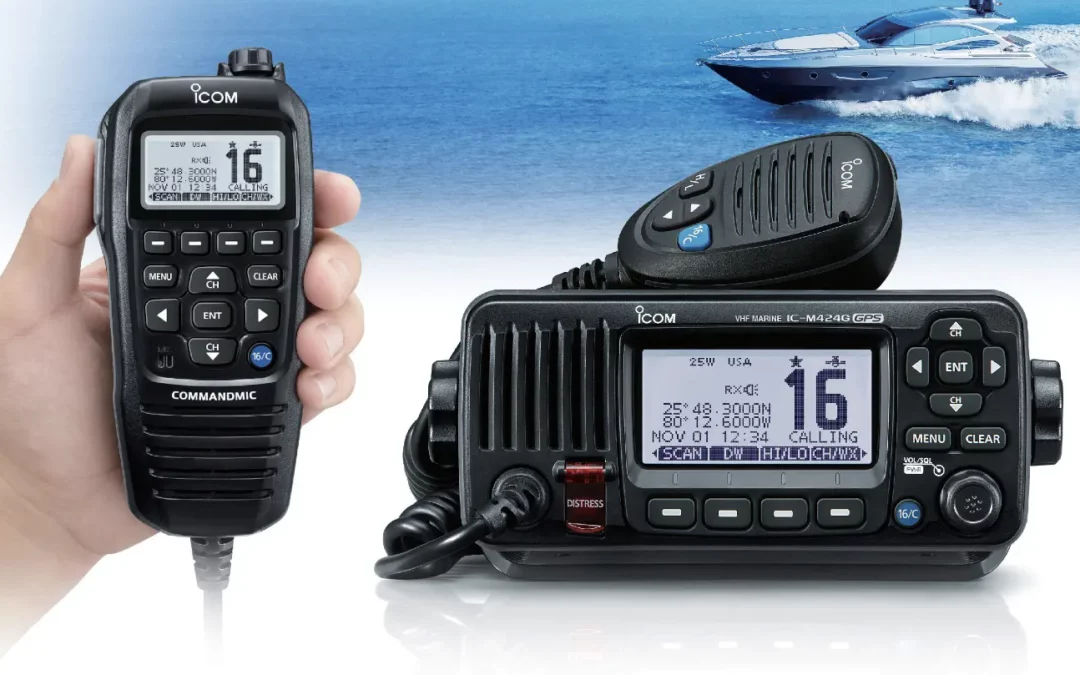
by Barani Chettiar | Aug 31, 2024 | Uncategorized
Introduction: Importance of Marine VHF Radios
Marine VHF radios are essential communication tools for boaters, providing a reliable means of communication while at sea. Whether it’s for routine communications with other vessels, obtaining weather updates, or sending distress calls in emergencies, marine VHF radios are indispensable for safe and efficient boating operations.
Basic Functions: Communication, Distress Calling, Weather Updates
At their core, marine VHF radios facilitate communication between vessels, harbors, and maritime authorities. They allow boaters to stay in touch with each other, coordinate movements, and request assistance when needed. Additionally, VHF radios are equipped with channels dedicated to distress calling (Channel 16) and weather updates (NOAA Weather Radio), ensuring that boaters have access to critical information at all times.
Advanced Features: DSC Capabilities, GPS Integration, Automatic Identification
Modern marine VHF radios come equipped with advanced features that enhance their functionality and safety capabilities. Digital Selective Calling (DSC) is one such feature that allows boaters to send distress signals with a single button press, automatically transmitting their vessel’s position to nearby vessels and rescue authorities. Many VHF radios also feature GPS integration, enabling automatic position reporting and accurate location tracking during distress situations. Additionally, automatic identification systems (AIS) allow vessels to exchange real-time information about their identity, position, and course, improving situational awareness and collision avoidance.
Safety Applications: Man Overboard Alarms, Emergency Channels
Safety is paramount at sea, and marine VHF radios play a crucial role in ensuring the well-being of boaters. Many VHF radios are equipped with man overboard alarms, which trigger an alert if a crew member falls overboard, facilitating quick and effective rescue operations. Emergency channels, such as Channel 16, provide a dedicated frequency for distress calls, enabling boaters to quickly summon assistance in emergencies.
Networking Capabilities: AIS Integration, Inter-Vessel Communication
Marine VHF radios also facilitate networking and communication between vessels. AIS integration allows boaters to receive real-time information about nearby vessels, including their identity, position, and course, helping to avoid collisions and navigate safely in congested waters. Inter-vessel communication capabilities enable boaters to communicate directly with other vessels, facilitating coordination and collaboration during joint operations or emergencies.
Maintenance and Care Tips: Antenna Checks, Battery Monitoring
To ensure the reliability and effectiveness of marine VHF radios, regular maintenance and care are essential. Boaters should regularly inspect their VHF antennas for signs of damage or corrosion, as damaged antennas can impair communication range and signal quality. Additionally, monitoring the battery status and ensuring adequate power supply is crucial to ensure that the radio remains operational when needed most.
Conclusion: Essential Tool for Safe Boating Communication
In conclusion, marine VHF radios are essential communication tools for boaters, providing reliable communication, safety features, and networking capabilities that are vital for safe and efficient boating operations. With advanced features such as DSC capabilities, GPS integration, and AIS networking, VHF radios offer boaters enhanced situational awareness and communication capabilities, improving safety and coordination on the water. By maintaining and caring for their VHF radios and utilizing their advanced features effectively, boaters can ensure a safer and more enjoyable boating experience for themselves and their crew. For those in need of a good VHF radio, consider a trusted supplier like Tecomart, which offers an extensive range of ICOM and Standard Horizon marine products.
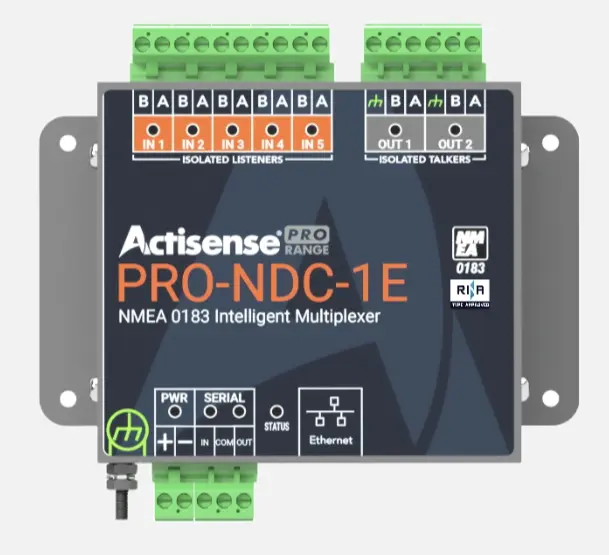
by Barani Chettiar | Jul 30, 2024 | Uncategorized
In the intricate world of marine electronics, seamless communication between onboard devices is crucial for efficient navigation and safety on the water. At the heart of this communication network lies the NMEA multiplexer, a versatile device that plays a vital role in managing and optimizing data transmission. But what exactly is an NMEA multiplexer?
An NMEA multiplexer is a sophisticated electronic device designed to consolidate and streamline data exchange between various navigational and instrumentation systems on board a boat or vessel. It acts as a central hub, receiving input from multiple NMEA (Navigational Marine Electronics Association) devices such as GPS receivers, depth sounders, wind sensors, and autopilots, and merging these data streams into a single, unified output. This consolidated data stream is then distributed to navigation displays, chartplotters, computers, and other connected devices, providing a comprehensive view of the vessel’s navigation and performance data.
Benefits of using an NMEA Multiplexer
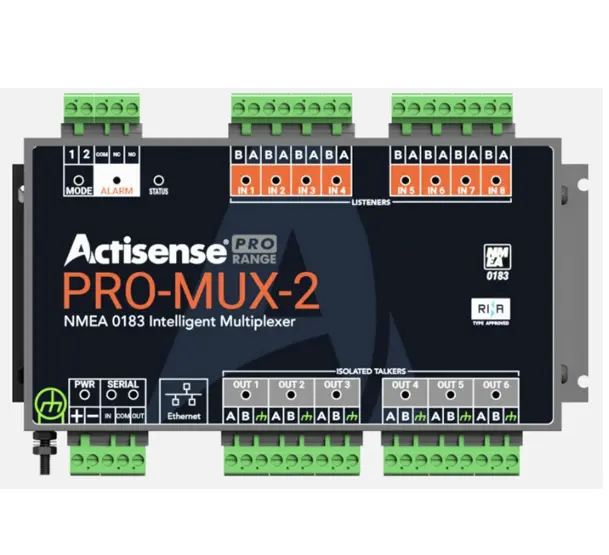
The utilization of an NMEA multiplexer offers a plethora of benefits to boaters and marine enthusiasts alike:
- Simplified Data Integration: By consolidating multiple NMEA data streams into a single output, the multiplexer simplifies data management and reduces clutter in onboard wiring.
- Enhanced Communication Between Devices: The multiplexer facilitates seamless communication between diverse onboard devices, ensuring that critical navigation and instrumentation data is shared accurately and efficiently.
- Advanced Configuration Options: Many NMEA multiplexers offer advanced configuration options, allowing users to customize settings such as baud rates, data filtering, and routing rules to suit their specific needs and preferences.
- Setting up Filters and Routes: With the ability to set up filters and routes, users can control which data is transmitted to which devices, optimizing data flow and conserving bandwidth.
- Integrating with other Marine Electronics: NMEA multiplexers seamlessly integrate with a wide range of marine electronics systems, including navigation displays, chartplotters, radar systems, and autopilots, enhancing overall functionality and interoperability.
Troubleshooting Common Issues
Despite their many benefits, NMEA multiplexers may encounter common issues such as signal interference, configuration errors, or compatibility issues. Troubleshooting these issues often involves checking physical connections, updating firmware, and adjusting configuration settings as needed. Additionally, consulting manufacturer documentation or seeking assistance from technical support can help resolve more complex problems effectively.
Conclusion: Enhancing data management on boats
In conclusion, NMEA multiplexers are essential for enhancing data management and communication on boats and vessels. By consolidating and optimizing data transmission between onboard devices, these multiplexers streamline navigation, improve safety, and boost overall onboard functionality. Whether navigating coastal waters or embarking on extended offshore voyages, utilizing an NMEA multiplexer ensures that boaters have access to accurate, reliable, and timely information, allowing for confident and safe navigation. For those in need of NMEA 0183 or NMEA 2000 multiplexers or buffers, consider a trusted supplier like Tecomart, which offers an extensive range of Actisense products.
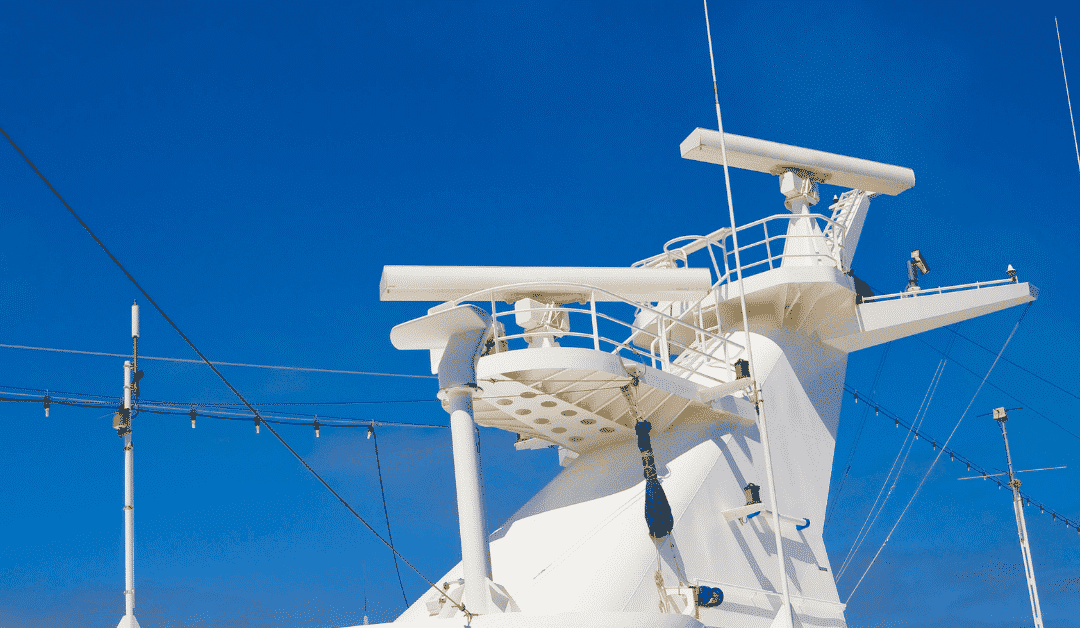
by Barani Chettiar | May 20, 2024 | Uncategorized
Importance of Situational Awareness on Vessels
In the vast expanse of the open sea, situational awareness is the cornerstone of safe and efficient navigation for commercial vessels. It is the vigilant understanding of one’s surroundings, critical for avoiding collisions, navigating through adverse conditions, and ensuring the overall safety of the vessel and its crew. In this blog post, we delve into the crucial role radar systems play in elevating situational awareness and the myriad benefits they offer to commercial vessels navigating the world’s waterways.
Functionality of Radar Systems
Radar systems operate on the principle of emitting radio waves and analyzing their reflections to create a comprehensive map of the vessel’s surroundings. This real-time data includes information on the position, distance, and speed of objects within the radar’s range. By utilizing radio waves, radar systems can penetrate adverse weather conditions such as fog or darkness, providing invaluable information when visual observations are limited.
Types of Radar Systems for Commercial Vessels
X-Band Radar:
Ideal for short-range applications, the X-Band radar offers high resolution and is effective in detecting smaller targets.
S-Band Radar:
With a longer wavelength, the S-Band radar is suitable for long-range detection, making it essential for open-sea navigation and identifying larger objects.
Dual-Band Radar:
Combining the strengths of both X and S bands, dual-band radar systems offer versatility, providing effective coverage for both short and long-range applications. Choosing the right radar system depends on factors such as the vessel’s size, intended use, and navigational requirements.
Enhancing Situational Awareness with Radar Data
Obstacle Detection:
Radar systems excel at detecting obstacles, including other vessels, buoys, and land masses. This early warning system enables crews to make timely navigational decisions, preventing potential collisions.
Collision Avoidance:
By providing real-time information about the movement of nearby vessels, radar systems assist in effective collision avoidance strategies, reducing the risk of accidents in busy waterways.
Navigational Aid:
Radar data acts as a navigational aid, offering insights into navigational markers, channels, and potential hazards even in adverse weather conditions. This aids in precise route planning and adjustments.
Weather Monitoring:
Some advanced radar systems include weather monitoring capabilities, providing information about approaching storms or adverse weather conditions. This allows crews to adapt their routes and ensure the safety of the vessel.
Training and Implementation for Crew Members
Understanding Radar Displays:
Crew members must be familiar with interpreting radar displays, understanding symbols, and recognizing different types of targets.
Operational Procedures:
Training includes hands-on experience in operating radar controls, adjusting settings, and utilizing additional features for optimal performance.
Interpretation of Radar Data:
Crew members need to develop the skill of interpreting radar data in real-time, identifying potential risks, and making informed navigational decisions. Regular drills and exercises are essential to ensure that crew members stay proficient in using radar systems effectively, fostering a culture of continuous improvement in situational awareness.
Maintenance and Upkeep of Radar Systems
Periodic Inspections:
Routine checks of radar antennas, connections, and associated components help identify and address any issues promptly.
Calibration:
Regular calibration ensures accurate data output and prevents discrepancies that could impact navigational decisions.
Software Updates:
Keeping radar software up to date allows vessels to benefit from advancements, bug fixes, and improvements in system performance.
Power Supply Checks:
Ensuring a stable power supply and having backup power sources in place prevent disruptions to radar functionality, especially during critical navigational moments.
Conclusion: Benefits of Utilizing Radar Technology
In conclusion, radar systems are indispensable tools for enhancing situational awareness on commercial vessels. The benefits extend beyond mere obstacle detection – they empower crews with the information they need to navigate safely through challenging conditions, avoid collisions, and make informed decisions that contribute to the overall efficiency and safety of maritime operations. Investing in quality radar systems, such as those available at www.tecomart.co, ensures that commercial vessels are equipped with reliable technology that stands as a stalwart guardian on their maritime journeys. By integrating radar technology into daily operations, vessels can navigate with confidence, leveraging the power of advanced systems to overcome challenges and navigate the open sea with heightened situational awareness.






